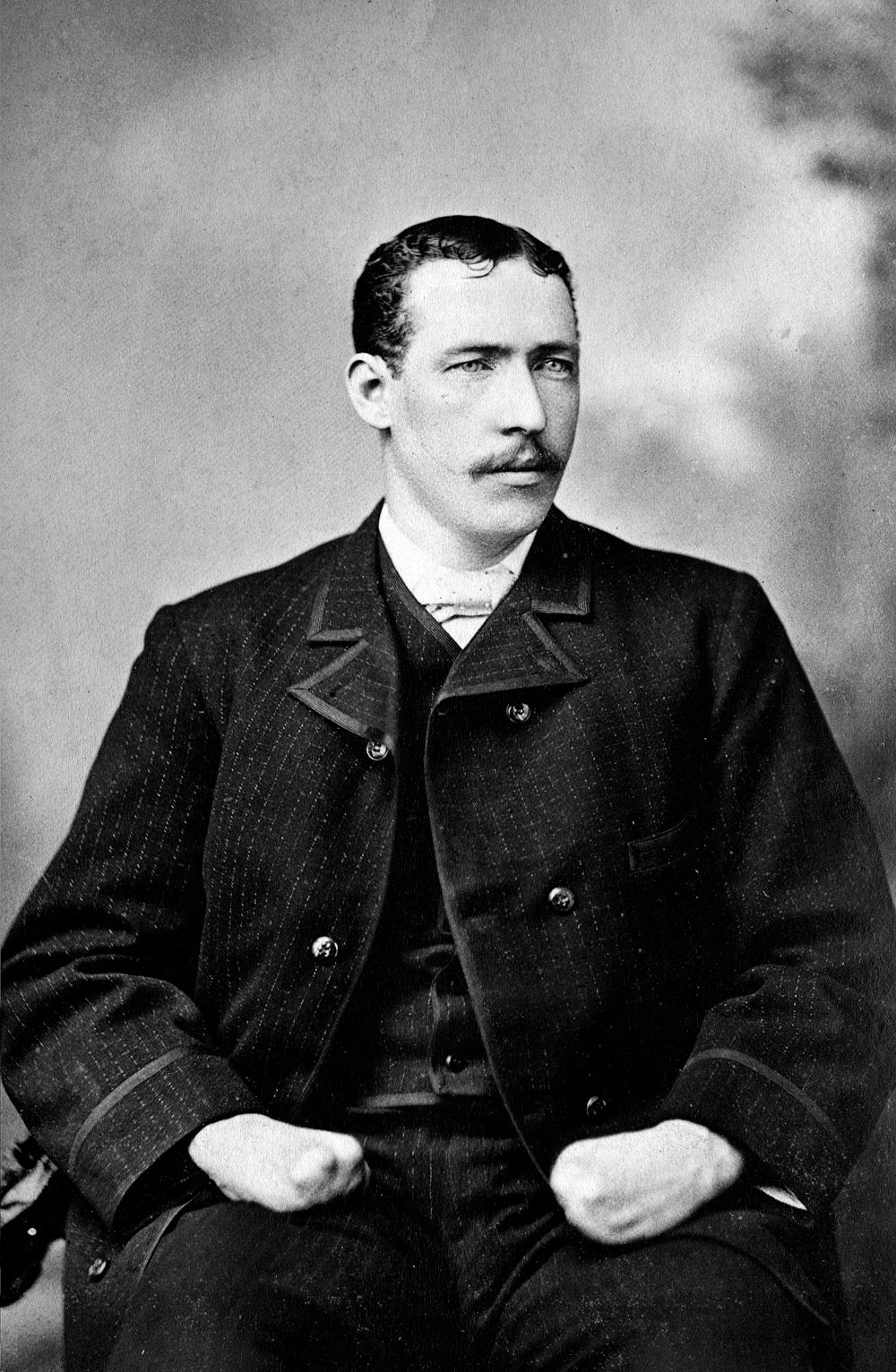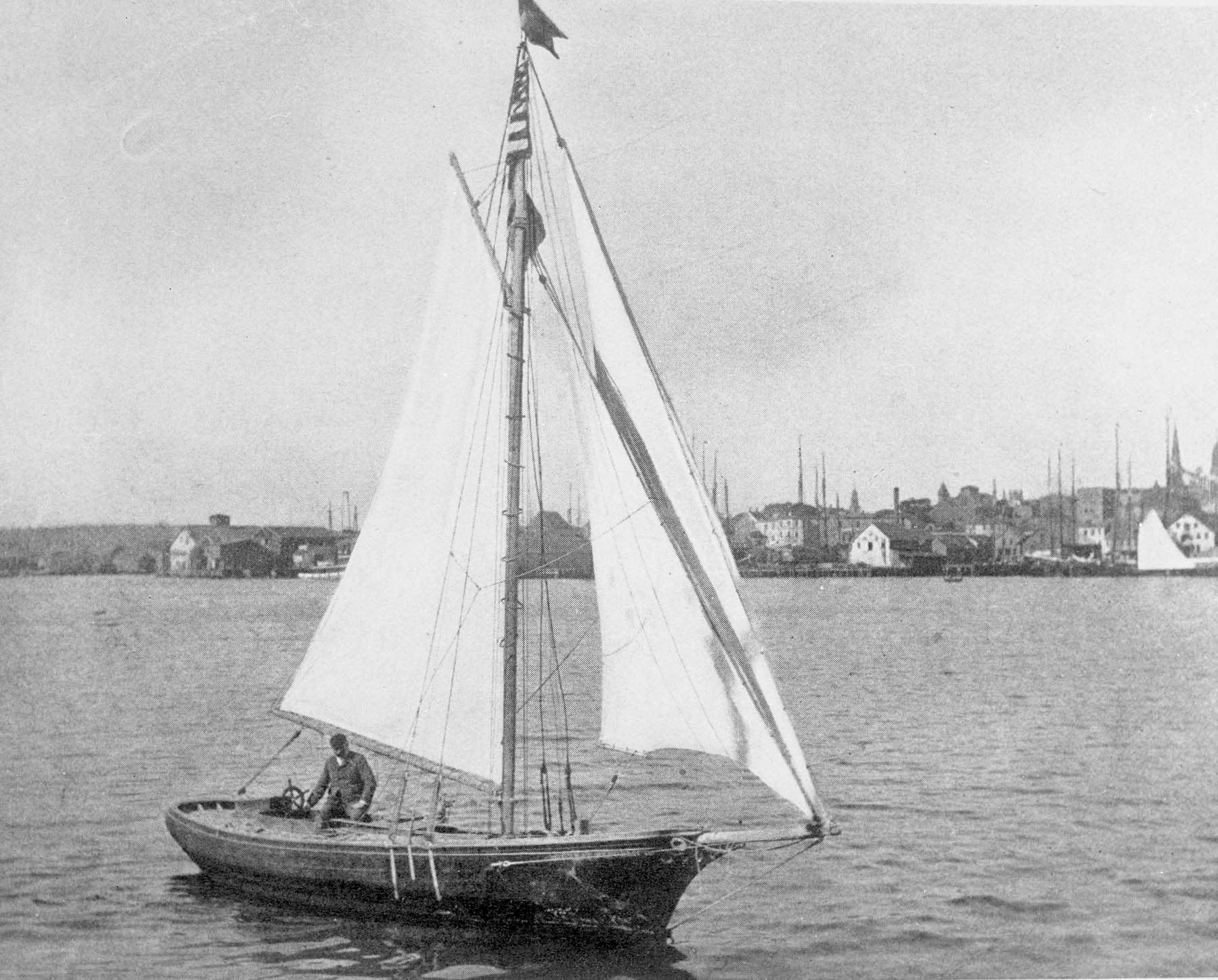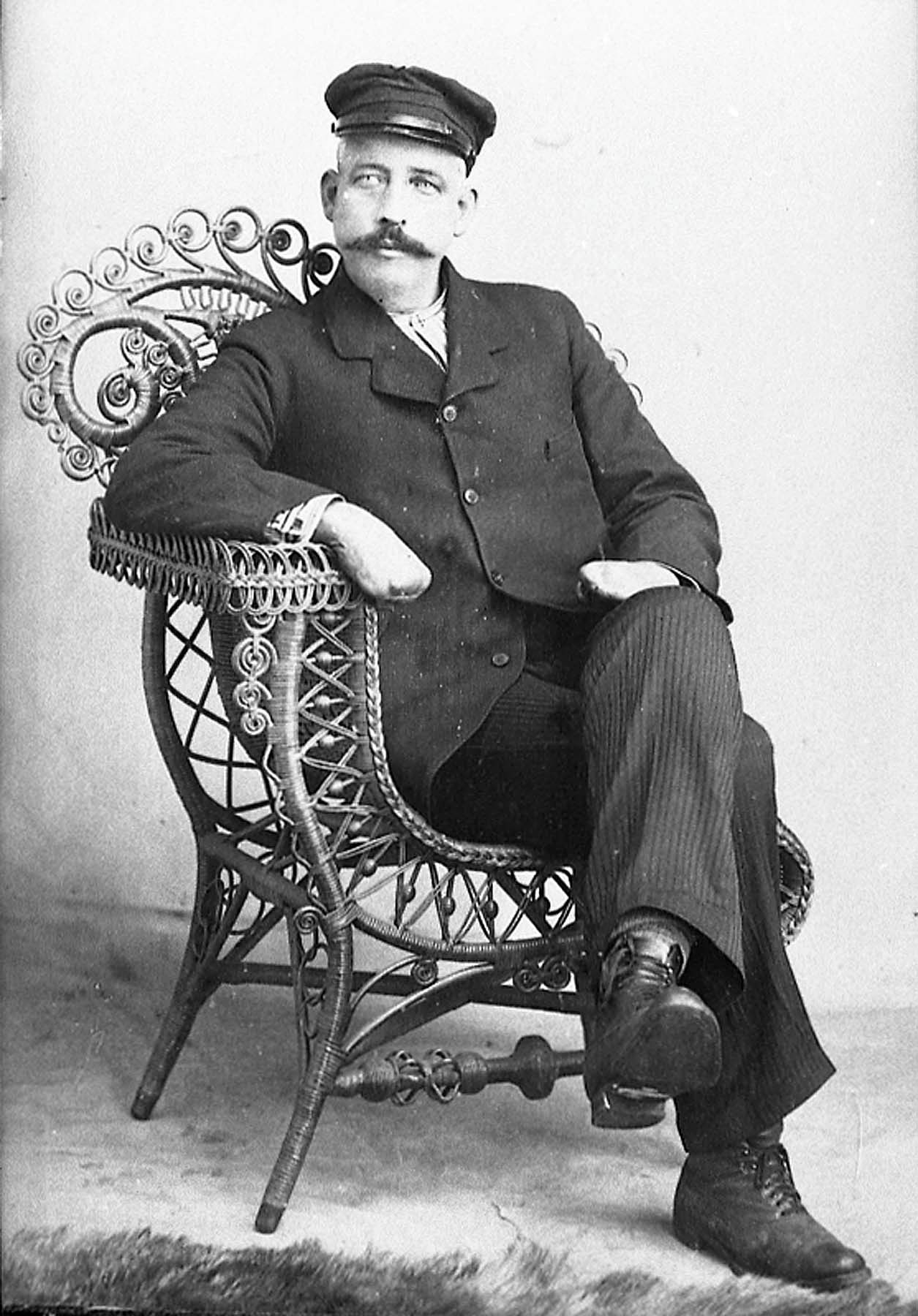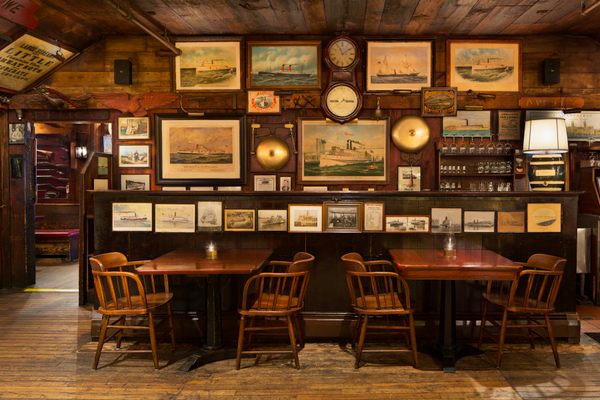The Man Who Sailed Across the Atlantic… Without the Benefit of Fingers

Blackburn in one of his many boats (Photo: Collection of the Cape Ann Museum)
In the city of Gloucester, Massachusetts, Howard Blackburn was famous for not having any fingers.
Although, it wasn’t so much his lack of fingers that made him famous as much as how he lost them, and what he was able to do afterwards. Blackburn was unusually willful, and he was drawn to boats and the water. Even after the ocean caused him to lose his fingers, he couldn’t stay away. Sixteen years later, he set off in a 30-foot boat to cross the Atlantic, solo, from Gloucester, MA, to Gloucester, England.
Born in Nova Scotia, Blackburn started working on ships when he was 13, and by the time he arrived more permanently in the Massachusetts, in 1879, he had sailed far from the cold coast where he was raised. He was a big man—six foot two, according to his biographer, Joseph Garland, who never stops marveling at his size—and a strong addition to a crew. In the winter of 1883, he shipped out from Gloucester on the Grace L. Fears, a fishing schooner with a fantastic reputation: not long before, Garland writes, the boat had succeeded in bringing in 50 tons of fish in just over a month, “the biggest money ever stocked on a single halibut trip in the history of the fisheries.”
On big schooners like this one, the crew would pair off in smaller dory boats to do the work of harvesting fish. One day, Blackburn and another man, Tom Welch, were on the sea in a dory, when it began to snow. They could not make it back to the ship. By the time the weather cleared, the schooner was gone, and the two men were on their own, somewhere off of Newfoundland.

Howard Blackburn (Photo: Collection of the Cape Ann Museum)
The boat was swamped with water, and with effort, the two men started trying to bail out the dory while moving the boat towards land. Blackburn took off his woolen mittens to make an anchor of sorts, to help turn the boat in the right direction, and while they were off his hands, they went over the side of the boat.
Mittenless, in the winter cold, Blackburn’s hands were inevitably going to freeze. He tried protecting one with a sock; it wouldn’t stay on, and it also fell into the sea. Now his foot was more exposed, too. Before both hands became numb, Blackburn decided to make them useful. He curved them around the oar, until they froze. He would still be able to row.
Whatever will to live Blackburn had did not work for Welch. In Blackburn’s account, he started slowing down and then stopped bailing altogether. Blackburn tried to encourage him: at least Welch’s hand worked, but when Blackburn showed his own hands, already frozen and beaten, it made Welch blanche even more.
“I have always been sorry that I showed him the hand,” Blackburn later recounted in his autobiography. “For he gave up altogether then and said, ‘Howard, what is the use, we can’t live until morning, and might as well go first as last.’”

Blackburn sailing (Photo: Collection of the Cape Ann Museum)
Welch died before they reached land. But Blackburn kept rowing, even as coins of flesh were knocked off his hands and the oar handles wore away more on the inside. Even after he sighted the coast and made it to land, he was not safe. He spent a night alone keeping himself awake, to keep from dying, and a day rowing inland, trying to find any other people, before he was found and taken to the tiny town of Little River, east of the small Newfoundland town of Burgeo.
In Little River, the family that took him in had Blackburn soak his hands and feet in cold salt water, fed him slowly with simple food, and helped him recover his strength over the winter months. The morning after he was found, though, he started losing fingers. “When they took the wrappings off the right hand, the little finger dropped off,” he recounted. “The skin on all of the other fingers split open on the backs or tops and hung down, and the finger and thumb nails still hung to the flesh.” Over time, he would lose half of both thumbs, all the rest of his fingers, a number of toes and part of the foot without a sock.
He was alive, though, and in June, he returned to Gloucester, a legend and hero. “He is a young man and is extremely desirous of doing something for a livelihood,” the local paper wrote and suggested that his fans might send some money to get him started. The unofficial Blackburn fund eventually totaled $500, and with it, he opened a store and applied for a liquor license.

Blackburn (Photo: Collection of the Cape Ann Museum)
In photos of Blackburn taken after he lost his fingers, he looks well. He keeps his hair short and the mustache under his long, angular nose tidy, and he dresses in sharp suits. His hands look almost as if he were clenching his fists tight, fingers tucked back and thumbs underneath. His bar did well, and he became not just a town legend but a successful businessman. (And while being a town legend can help a person’s business, really, there’s no guarantee that the two go together.)
Blackburn wasn’t done with the ocean, though. In May of 1899, he called a press conference to announce that within the next month, he would set off for England, alone, in a sloop he had commissioned especially for this journey.
This wouldn’t be the first solo sailing journey across the Atlantic. But it was still a new and almost unprecedented feat: only a few people had tried, and the first successful journey had been completed only 23 years before, by another Gloucester man. And, of course, no one had done it before without the aid of fingers.
To Blackburn, though, his digit-less hands did not seem to post much of a problem. His boat was designed to be handled by a single person, and the ropes measured extra long, to make them easier to tie without the delicate movements of fingers. “He managed well enough,” Garland writes. The problems of the journey were the same that anyone would have encountered: fog, too-calm seas, winds that didn’t cooperate, and narrow escapes from collisions with bigger ships. He didn’t talk to anyone for the first 30 or so days of trip, and after a brief conversation with a passing schooner, he decided to change that. “Whenever anything had to be done, I would give orders to do so and so and then go and do it myself,” he wrote.
He made it across the ocean safely, if slowly. He had aimed to finish the crossing in 50 days, but it took him 62. He had better luck the second time he crossed the ocean by himself, two years later: he made it to Portugal in just 39 days, a record that stood for decades.

![Anne Bonny and Mary Read were both "convicted of piracy at a Court of Vice Admiralty [and] held at St. Jago de la Vega on the Island of Jamaica, 28th November 1720," according to the inscription accompanying this 1724 Benjamin Cole engraving from <em>A General History of the Pyrates</em>, by Daniel Defoe and Charles Johnson.](https://img.atlasobscura.com/5_kDHgENxQkc0QzZuPs_kICvmEP5JNCV8bcXDI7m5Do/rs:fill:600:400:1/g:ce/q:81/sm:1/scp:1/ar:1/aHR0cHM6Ly9hdGxh/cy1kZXYuczMuYW1h/em9uYXdzLmNvbS91/cGxvYWRzL2Fzc2V0/cy81NDQ0ZGNiMi1m/YzRkLTQ4YjUtYTVh/MC0xYzU2ZDliOTY0/YjY1NGNkMWI4MWEw/OTExMDM5ZTZfQW5u/ZSBCb25ueSBhbmQg/TWFyeSBSZWFkIC0g/RmVtYWxlIFBpcmF0/ZXMgaW4gMTgwMHMu/anBn.jpg)










Follow us on Twitter to get the latest on the world's hidden wonders.
Like us on Facebook to get the latest on the world's hidden wonders.
Follow us on Twitter Like us on Facebook